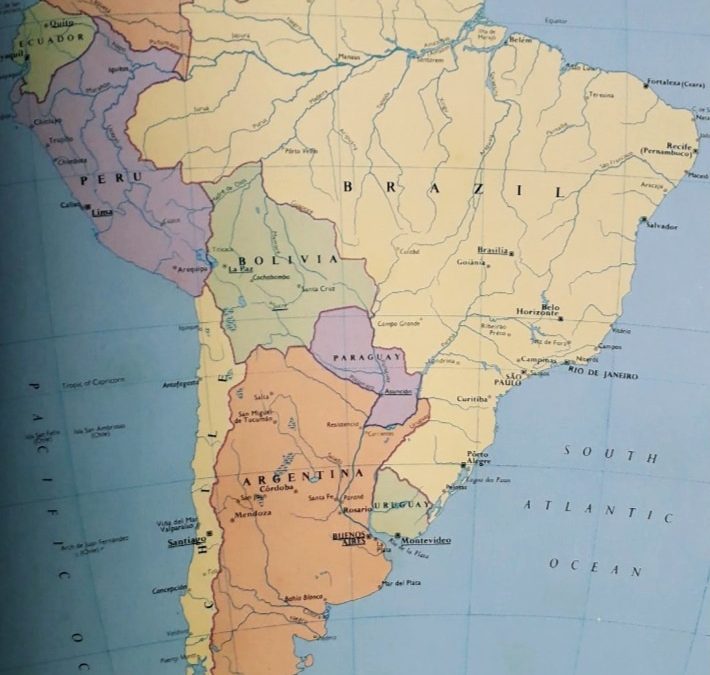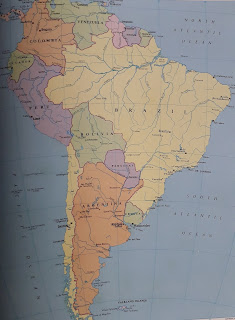Paraguay, and where is that? A question I have been asked numerous times over the years.
Firstly and most importantly it is somewhere very much off the well travelled tourist trails. Not somewhere sought too often in the reference material on display in travel shops. A place that had hardly a mention in guides where I first arrived and that does not make many more appearances these days.
So unknown is Paraguay that there are times the enquirer cannot even place it on the correct continent. Is it in Africa? A fate also suffered by Guyana.
The truth though is that it is hidden in plain sight there for anyone to find. It sits landlocked in the middle of South America. To the south there is Argentina, to the east Brazil and to the north of Paraguay Bolivia is to be found.
Three countries that all of which seem far more able to catch the passing the attention of tourists as they travel around South America. Brazil and Argentina are truly huge and Bolivia has the Andes and the mystery of ancient civilizations.
That is not bad thing however as it means the country does not need to adapt to the wants of a transient tourist population and gives it a certain air of mystery. Additionally the handcrafts, customs and traditions are genuine rather than watered down versions aimed at the tourist market. Enjoyed by the locals as much as by any tourists.
The land of Paraguay is defined on a map by the waters that flow past it. To the East, West and South it is hemmed in by the great rivers of the Parana river basin. Primarily the Parana and the Paraguay but also the Pilcomayo. These great rivers act as natural boundaries giving a clear logic to the Paraguayan frontier.
Only in the north between Paraguay and Bolivia has the hand of man been required to lay out a border. Here lies the Chaco desert, a great thorn bush wilderness. The featureless landscape was for many years disputed between the two. The sharp straight lines of this frontier reflect how the lands were divided after Paraguay was victorious in the Chaco War of the 1930s.
A quick glace at a map can also be deceptive as to the size of Paraguay. At first it may appear small. This though is as a result of having two very large neighbours. Brazil and Argentina.
In fact Paraguay covers an area of just of 400,000 square kilometres. A greater area of land than that covered by Germany.
The Rio Paraguay running south from the border with Brazil to Asuncion where it joins the Pilcomayo splits the country into two geographically and climatically distinct regions.
To the west is the Chaco. A vast dry thinly populated region. Here sands and tough plants are the order of the day. Settlements are few and far between. Estates and ranches cover vast areas.
To the east Paraguay is wetter and more populated. The land is green and the majority of the population are to be found in this smaller half of the country. Even here though there is still ample space for nature. Green fields reach out into the distance and ranges of hills rise from the flatlands.
Paraguay is a warm country never knowing snow. The northern half of the country lies within the tropics. It is also far from the sea and never benefits from cooling sea breezes. This can result in very hot spells during high summer but also means that any cold winter snaps are brief.
Returning to the maps you will see the countries colonial Spanish past and indigenous history are woven together in the countries place names.
Place names like Asuncion and Encarnacion speak of Paraguay’s Catholic Spanish past while others like Villarrica and Arroyos y Esteros speak of more secular Spanish thoughts.
Alongside these Spanish rooted names there are many others such as Caacupe, Piribebuy, Ybycui and Caaguazu that are derived directly from the indigenous Guarani language. Paraguay’s second national language, one that is still spoken by almost everyone and that is the first language for many.
In other posts I will go into much more detail about Paraguay and my life here. For the moment though it might be a good time to consult your atlas so that if ever you are asked you will know exactly where Paraguay is.



Recent Comments